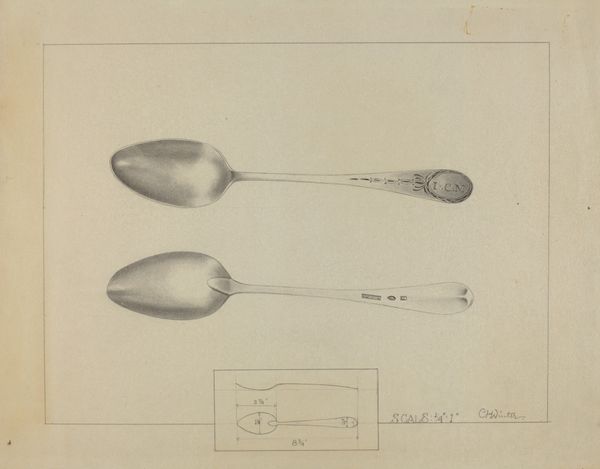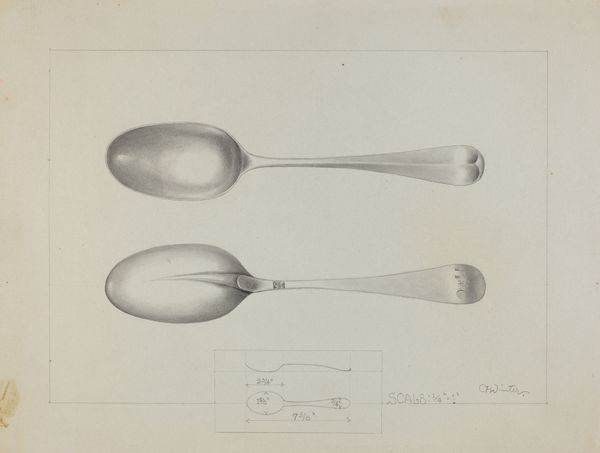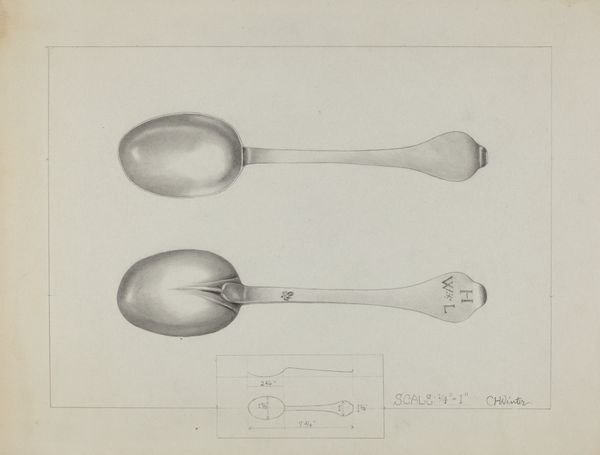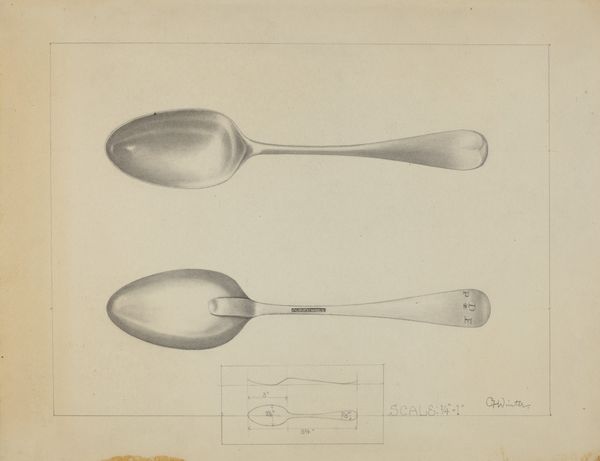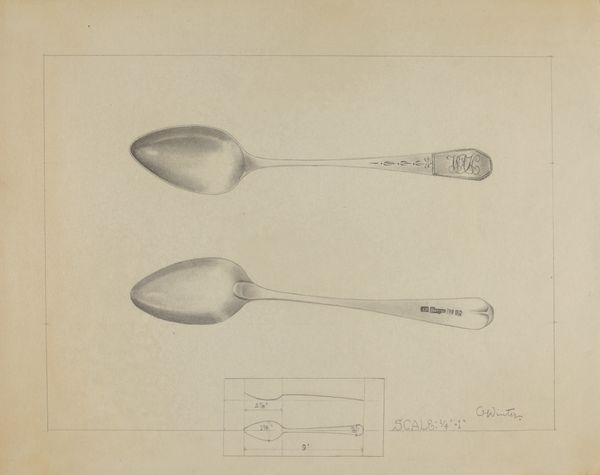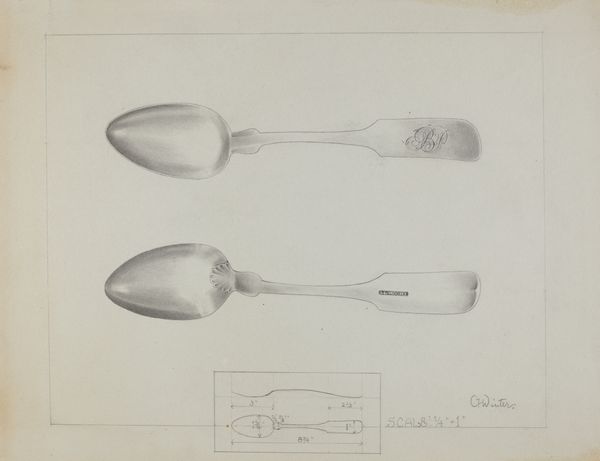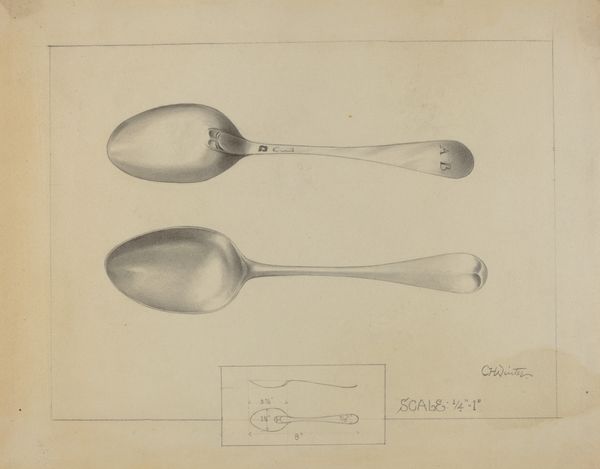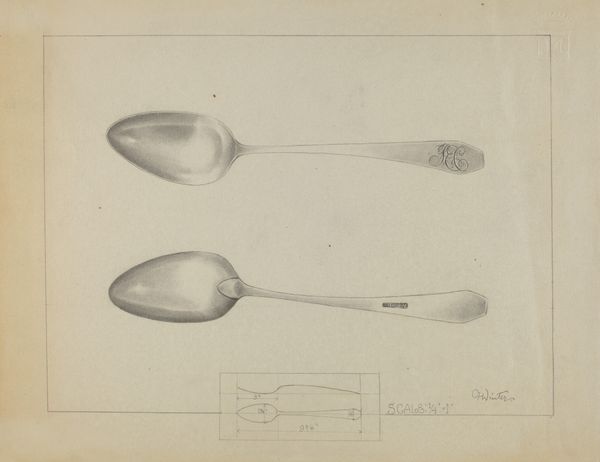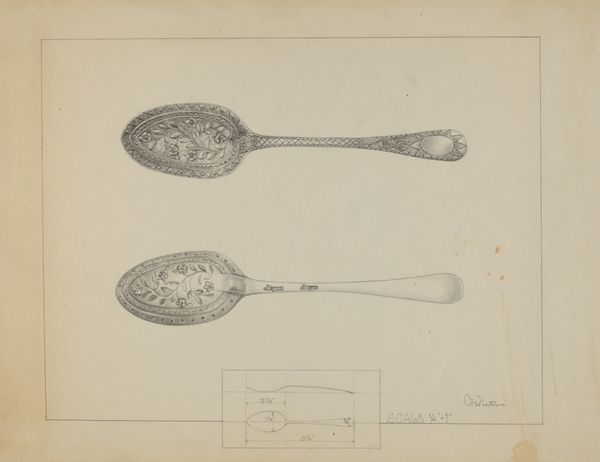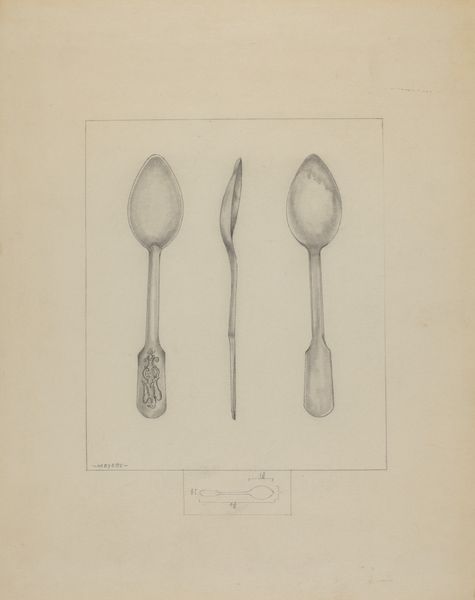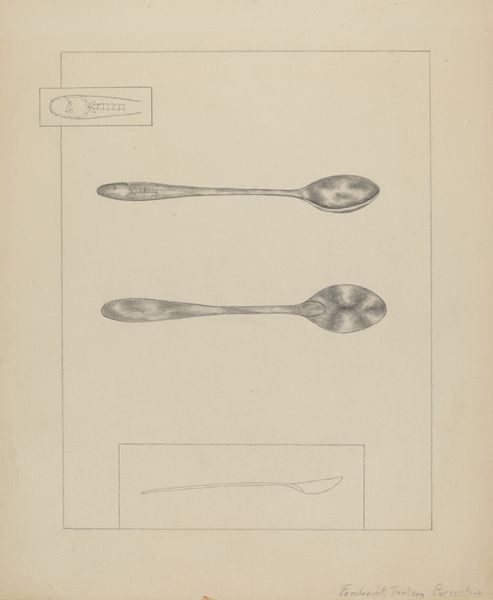
drawing, pencil
#
drawing
#
pencil drawing
#
geometric
#
pencil
#
academic-art
Dimensions: overall: 22.9 x 28.9 cm (9 x 11 3/8 in.) Original IAD Object: 8 7/8" long; 1 3/4" wide
Copyright: National Gallery of Art: CC0 1.0
Curator: Today, we’re examining Charlotte Winter's drawing "Silver Spoon," created around 1936. The piece is executed in pencil on paper. What's your initial take on this seemingly straightforward subject, Editor? Editor: Stark and almost unsettlingly precise. The spoon seems less an object of utility and more an artifact dissected for study. I can't help but see its potential symbolic weight, a signifier of wealth perhaps. Curator: It's interesting that you immediately jump to symbolism, because I am fascinated by the materiality of the piece. Consider the labor that went into rendering this drawing; the craft involved in carefully translating a functional, mass-producible object into a hand-rendered artwork. Also, the geometric technical drawing at the bottom adds an instructional element, bridging fine art with industrial design. Editor: And what of the fact it is a "Silver Spoon"? I am interested in that expression and what it represents: Inherited privilege, advantage... a lack of lived experience that many do not have access to. The artist might be interested in exactly those concerns, particularly when viewed against the backdrop of the interwar period. Curator: Good point, the context is crucial. Though, let's not forget the drawing itself. Winter focuses our attention on the object's physical construction. We’re invited to analyze the spoon’s form, weight, and manufacture - we must reflect on consumption and the means of production! Editor: Right, I hear you—it’s both about *what* is depicted, but *how* it’s depicted! I look at the two spoons, one more embellished, and it makes me consider societal expectations linked to such items. Who were these spoons *for*? How were they circulated and consumed? Curator: Exactly. Ultimately, Winter's choice of such an everyday object asks us to re-evaluate not just the art itself but also our relationship with material culture and social structures. Editor: Indeed, and that it is still being preserved today speaks to its continuous relevance, raising fundamental questions about value, class, and who has the luxury to sit at that proverbial table.
Comments
No comments
Be the first to comment and join the conversation on the ultimate creative platform.

